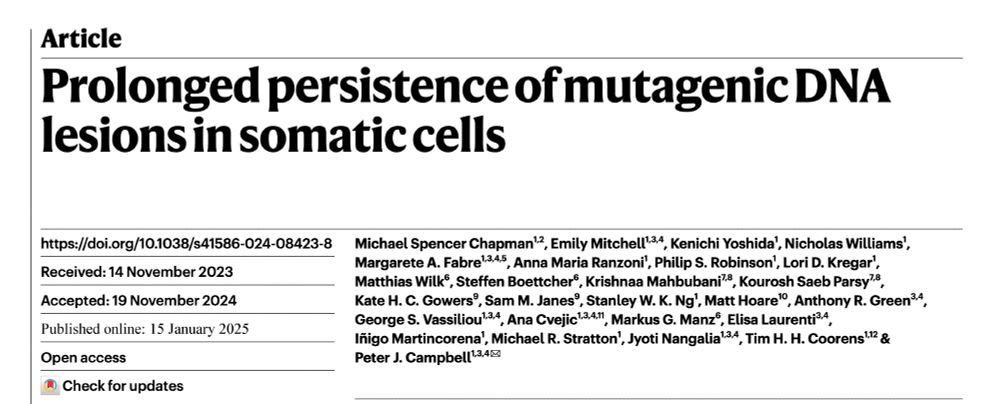







DNA damage is distinct from a mutation. While a mutation is one of the 4 standard DNA bases (A, G, T or C) in the wrong place (like a spelling mistake), DNA damage is chemically altered DNA (more like some illegible writing).

DNA damage is distinct from a mutation. While a mutation is one of the 4 standard DNA bases (A, G, T or C) in the wrong place (like a spelling mistake), DNA damage is chemically altered DNA (more like some illegible writing).

For me this was discovery science as I had always hoped it would be. A lot of fun, and some proper detective work with plenty of twists & turns on the way. Brief thread below

For me this was discovery science as I had always hoped it would be. A lot of fun, and some proper detective work with plenty of twists & turns on the way. Brief thread below
Our paper in @nature.com today came from just such a blip. So don’t ignore the weird stuff. Pull on that thread...

Our paper in @nature.com today came from just such a blip. So don’t ignore the weird stuff. Pull on that thread...

